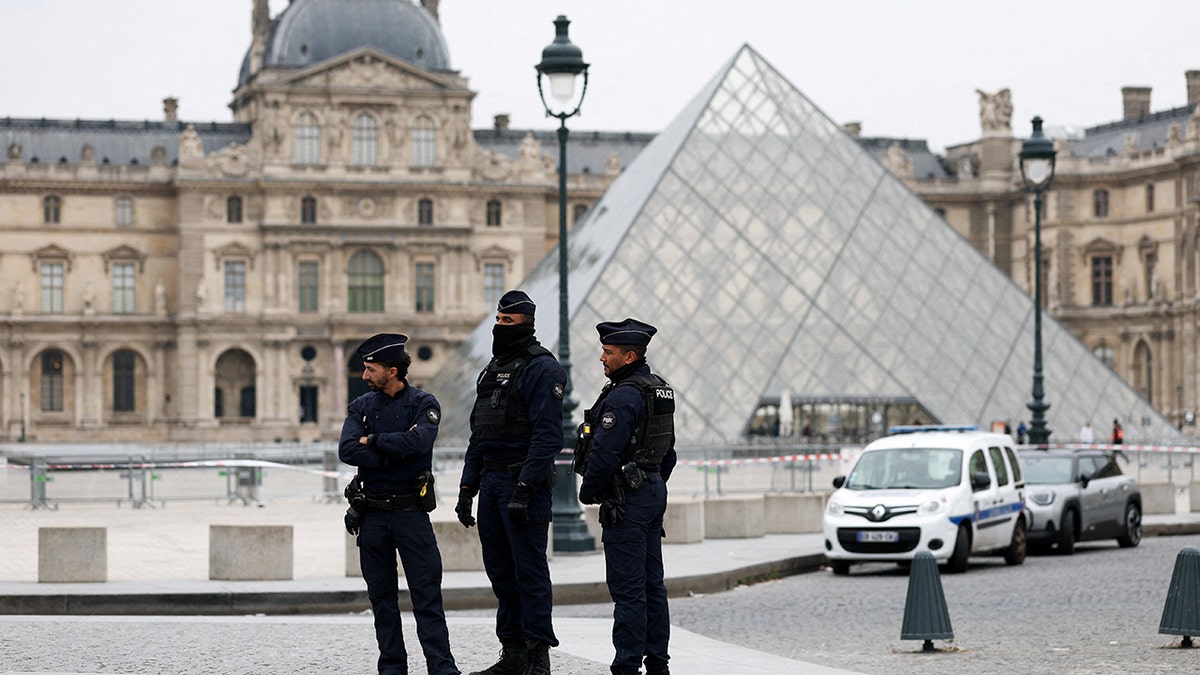Why the world's most secure museum fell in a 7-minute heist
Behind the criminal incident lies a management lesson: how organizations lose the ability to distinguish between illusory and real security. The Louvre heist didn't happen despite the advanced security systems, but largely because of them.

Police officers stand near the pyramid of the Louvre Museum after reports of a robbery, in Paris, France, Oct. 19, 2025.
But behind the criminal incident lies a management lesson: how organizations lose the ability to distinguish between illusory and real security. The Louvre heist didn't happen despite the advanced security systems, but largely because of them. When trust in machines replaces human alertness, when the system is perceived as a substitute for thinking, reality tends to strike from the simplest place.
The Louvre's security systems were built under the assumption that the threat would look like it used to. Suspicious figure, alarm, physical breach attempt. But in an era where risk stems from the combination of technology, human agility, and surprise capability, management methods remained fossilized. The cameras documented everything, but nobody actually saw. Data flowed in real time, but there was no one to connect it into one picture. In other words, the technology was smart, but the management wasn't.
This is perhaps the essence of the challenge of the artificial intelligence era: the smarter the systems become, the more relaxed people get. Digital security creates an illusion of control, and the organization becomes addicted to procedures and systems rather than to wisdom. No algorithm identifies a lack of attention, no software warns about mental stagnation. When everything is connected, it seems like everything is under control – until it turns out nobody is really alert anymore.
If the Louvre Museum, one of the most secure places in the world, can be breached in seven minutes, any organization is vulnerable. Not always technically, but conceptually. Not through a back door, but through managerial blindness. Risk management in the current era is no longer a bureaucratic process of updating technologies, but an art of adaptation. It requires managers who identify anomalies in real time, who understand that the unexpected is already the rule, and who grasp that the real threat is complacency.
Ultimately, the Louvre heist isn't just a story about security – it's a parable about leadership and responsibility. It reminds us that as long as we continue to entrust human judgment to smart machines, we remain exposed to precisely what isn't considered possible. In an era of artificial intelligence, risk management isn't about preventing the unexpected, but about recognizing when reality has already changed and moving with it.
UPDATE:
2 Louvre robbers caught fleeing France
DNA traces discovered at the museum enabled investigators to identify the suspects, both aged in their 30s and originating from Seine-Saint-Denis, a Paris suburb.

The men are believed to be members of the masked burglar gang that penetrated the Louvre museum last Sunday before making off with jewellery valued at £76 million. Already familiar to law enforcement, the suspects were characterized as "seasoned burglars" by police, The Telegraph reported. The Banditry Repression Brigade in Paris's 17th arrondissement now holds them in custody for interrogation.
Investigators continue pursuing the remaining two suspects while examining whether a conventional crime organization or an art trafficking network orchestrated the theft, The Telegraph reported.
Paris prosecutor Laure Beccuau criticized the initial reports in a letter to Le Figaro, which disseminated confidential information about the apprehensions, according to The Telegraph. "I deeply deplore the hasty disclosure of this information by informed persons, without consideration for the investigation. This revelation can only harm the investigative efforts of the hundred or so investigators involved in the search for both the stolen jewels and all the criminals. It is too early to provide any details."
However, France's interior minister expressed his "warmest congratulations" to the investigators on X regarding the recent developments, stating they had been working tirelessly on the case, The Telegraph reported.
Law enforcement successfully retrieved 150 DNA samples from the array of items the group abandoned, including a scooter helmet, a blowtorch, a walkie-talkie, a yellow vest, and a blanket, The Telegraph reported. "More than 150 samples of DNA, papillary and other traces were taken," Beccuau stated Friday, according to The Telegraph. "The analyses require time limits, even if they are a priority for the labs. We are expecting feedback in the coming days, which may be able to provide us with leads, especially if the perpetrators were on file."
Beccuau additionally verified that law enforcement utilized CCTV to track the gang's movements on two Yamaha TMax scooters, stating that video surveillance from public and private cameras "made it possible to follow their route in Paris and in neighbouring departments," The Telegraph reported.
Sunday saw Nuñez dismiss a proposal to establish a police station within the Louvre following requests from the museum's director, The Telegraph reported. "I'm against it. If we start with the Louvre, we'll put them everywhere," Nuñez stated in an interview with La Tribune Dimanche, a weekly newspaper, The Telegraph reported. "The current police station is right next to the Louvre. As soon as there was an alert, the police were there within three minutes." A police station located in the museum "would not have changed anything," Nuñez asserted, emphasizing that the tourist-saturated area represents the most heavily policed section of Paris, The Telegraph reported.
On Friday, a portion of the museum's remaining jewelry collection was transferred to the Bank of France, the national central bank of France, under police escort, The Telegraph reported. The collection now resides in a vault buried 85 feet (26 meters) underground, which additionally houses France's gold reserves and other national treasures, including Leonardo da Vinci's Notebooks valued at an estimated €600 million ($680 million), Le Figaro noted, according to The Telegraph.
No comments:
Post a Comment